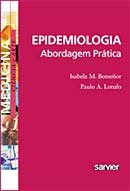No The New England Journal of Medicine, o artigo Computed Tomography — An Increasing Source of Radiation Exposure de David J. Brenner e Eric J. Hall cujas conclusões apresento abaixo.
Conclusions
The widespread use of CT represents probably the single most important advance in diagnostic radiology. However, as compared with plain-film radiography, CT involves much higher doses of radiation, resulting in a marked increase in radiation exposure in the population.
The increase in CT use and in the CT-derived radiation dose in the population is occurring just as our understanding of the carcinogenic potential of low doses of x-ray radiation has improved substantially, particularly for children. This improved confidence in our understanding of the lifetime cancer risks from low doses of ionizing radiation has come about largely because of the length of follow-up of the atomic-bomb survivors — now more than 50 years — and because of the consistency of the risk estimates with those from other large-scale epidemiologic studies. These considerations suggest that the estimated risks associated with CT are not hypothetical — that is, they are not based on models or major extrapolations in dose. Rather, they are based directly on measured excess radiation-related cancer rates among adults and children who in the past were exposed to the same range of organ doses as those delivered during CT studies.
In light of these considerations, and despite the fact that most diagnostic CT scans are associated with very favorable ratios of benefit to risk, there is a strong case to be made that too many CT studies are being performed in the United States. There is a considerable literature questioning the use of CT, or the use of multiple CT scans, in a variety of contexts, including management of blunt trauma, seizures, and chronic headaches, and particularly questioning its use as a primary diagnostic tool for acute appendicitis in children. But beyond these clinical issues, a problem arises when CT scans are requested in the practice of defensive medicine, or when a CT scan, justified in itself, is repeated as the patient passes through the medical system, often simply because of a lack of communication. Tellingly, a straw poll of pediatric radiologists suggested that perhaps one third of CT studies could be replaced by alternative approaches or not performed at all.
Part of the issue is that physicians often view CT studies in the same light as other radiologic procedures, even though radiation doses are typically much higher with CT than with other radiologic procedures. In a recent survey of radiologists and emergency-room physicians, about 75% of the entire group significantly underestimated the radiation dose from a CT scan, and 53% of radiologists and 91% of emergency-room physicians did not believe that CT scans increased the lifetime risk of cancer. In the light of these findings, the pamphlet "Radiation Risks and Pediatric Computed Tomography (CT): A Guide for Health Care Providers," which was recently circulated among the medical community by the National Cancer Institute and the Society for Pediatric Radiology, is most welcome.
There are three ways to reduce the overall radiation dose from CT in the population. The first is to reduce the CT-related dose in individual patients. The automatic exposure-control option on the latest generation of scanners is helping to address this concern. The second is to replace CT use, when practical, with other options, such as ultrasonography and magnetic resonance imaging (MRI). We have already mentioned the issue of CT versus ultrasonography for the diagnosis of appendicitis. Although the cost of MRI is decreasing, making it more competitive with CT, there are not many common imaging scenarios in which MRI can simply replace CT, although this substitution has been suggested for the imaging of liver disease.
The third and most effective way to reduce the population dose from CT is simply to decrease the number of CT studies that are prescribed. From an individual standpoint, when a CT scan is justified by medical need, the associated risk is small relative to the diagnostic information obtained. However, if it is true that about one third of all CT scans are not justified by medical need, and it appears to be likely, perhaps 20 million adults and, crucially, more than 1 million children per year in the United States are being irradiated unnecessarily

Nenhum comentário:
Postar um comentário